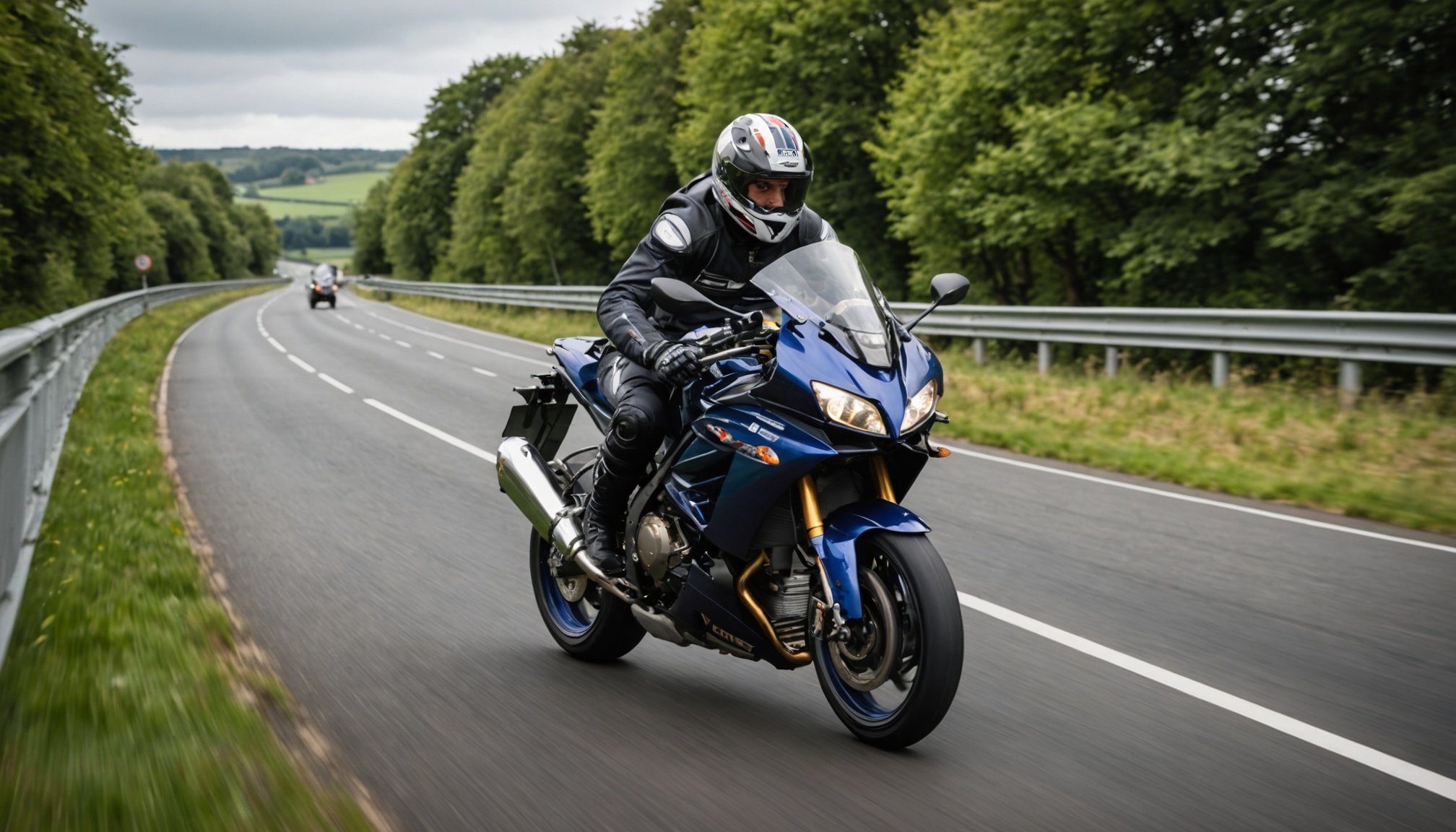Mastering High Winds on UK Bridges: Top Tips for Sport Bike Riders
Understanding the Challenge of High Winds
Riding a bike, especially a sport bike, can be an exhilarating experience, but it becomes significantly more challenging when you encounter high winds, particularly on bridges. Bridges, with their exposed and often elevated surfaces, can turn a pleasant ride into a daunting task. Here’s why understanding and preparing for these conditions is crucial.
High winds can affect the stability and control of your bike in several ways. First, the gusts can push your bike off course, making it difficult to maintain a straight line. This is especially true on bridges where the wind can be funneled and intensified. Second, the aerodynamic profile of your bike and your body position can exacerbate the impact of the wind. For instance, if you are riding a sport bike with a sleek, aerodynamic design, you might find that the wind catches you more easily than if you were on a more upright bike.
This might interest you : Essential Tips for Safeguarding Your Sport Bike in Moist UK Garages
Preparing for the Ride
Before you embark on your ride, especially if you know you will be crossing bridges, it’s essential to prepare both yourself and your bike.
Checking the Weather
- Always check the weather forecast before heading out. Look for wind speed and direction to anticipate how it might affect your ride.
- Use weather apps or websites that provide detailed wind forecasts, especially for the areas you will be riding through.
Bike Maintenance
- Ensure your bike is in good condition. Check the tire pressure, brakes, and suspension to make sure everything is functioning properly.
- Consider adjusting your bike’s setup to better handle windy conditions. For example, you might lower your bike’s suspension to reduce the impact of gusts.
Gear and Clothing
- Wear layers that can protect you from the wind. A windbreaker or a jacket with a windproof membrane can make a significant difference.
- Use gloves that provide grip and protection. Windy conditions can make your hands colder and less responsive.
- Wear a helmet with a visor to protect your face from the wind and any debris that might be blown around.
Riding Techniques for High Winds
When riding in high winds, especially on bridges, certain techniques can help you maintain control and safety.
Also to see : Top Ear Protection Solutions for UK Sport Bikers: Safeguard Your Hearing on the Road!
Positioning on the Bike
- Keep a low profile by leaning forward slightly. This reduces your aerodynamic profile and makes you less susceptible to being blown off course.
- Keep your knees bent and your weight centered over the bike. This improves stability and allows you to react more quickly to gusts.
Handling Gusts
- Anticipate gusts by looking ahead and feeling the wind direction. If you know a gust is coming, you can prepare by adjusting your speed and position.
- Use gentle inputs on the handlebars. Sudden movements can exacerbate the effect of the wind.
- Keep a steady speed. Avoid sudden acceleration or braking as this can make your bike more unstable in windy conditions.
Navigating Bridges
- Reduce your speed when approaching a bridge. High winds can be more intense on bridges, so it’s better to slow down and maintain control.
- Use the entire lane if necessary. Don’t feel pressured to stay to one side if it means you can’t control your bike.
- Be aware of other road users. Cars and larger vehicles can create turbulence that affects your ride.
Practical Tips and Examples
Here are some practical tips and examples to help you navigate high winds on UK bridges:
Example: Crossing the Severn Bridge
- The Severn Bridge, connecting England and Wales, is known for its strong winds. When crossing this bridge, it’s crucial to reduce your speed and stay alert.
- Use the hard shoulder if you need to. The hard shoulder can provide a safer and more stable path compared to the main road.
Example: Riding in Scotland
- Scotland is famous for its windy conditions, especially in the rural areas. When riding in Scotland, make sure to check the wind forecast regularly.
- Consider using bike paths or quieter roads that are less exposed to high winds.
Detailed Checklist for Riding in High Winds
Here’s a detailed checklist to ensure you are well-prepared for riding in high winds:
-
Weather Forecast:
-
Check wind speed and direction.
-
Look for any weather warnings.
-
Bike Maintenance:
-
Check tire pressure.
-
Ensure brakes are functioning properly.
-
Adjust suspension if necessary.
-
Gear and Clothing:
-
Wear windproof jacket and gloves.
-
Use a helmet with a visor.
-
Wear layers for temperature control.
-
Riding Techniques:
-
Maintain a low profile on the bike.
-
Keep knees bent and weight centered.
-
Anticipate gusts and use gentle inputs on the handlebars.
-
Navigating Bridges:
-
Reduce speed when approaching a bridge.
-
Use the entire lane if necessary.
-
Be aware of other road users.
Table: Comparing Riding Conditions on Different UK Bridges
| Bridge | Typical Wind Speed | Riding Tips |
|---|---|---|
| Severn Bridge | High | Reduce speed, use hard shoulder if needed, anticipate gusts. |
| Clifton Suspension Bridge | Moderate | Keep steady speed, avoid sudden movements, use entire lane if necessary. |
| Humber Bridge | High | Lower your profile, keep weight centered, be aware of turbulence from cars. |
| Tay Bridge | Moderate to High | Check wind forecast, adjust bike setup, use gentle inputs on handlebars. |
Quotes from Experienced Riders
- “Riding in high winds is all about anticipation and control. You need to feel the wind and adjust your riding accordingly,” says John Smith, an experienced sport bike rider.
- “I always check the weather forecast before heading out. Knowing what to expect makes a big difference in how you prepare and ride,” adds Jane Doe, a seasoned cyclist.
Riding a sport bike in high winds, especially on UK bridges, requires a combination of preparation, the right techniques, and a bit of experience. By understanding the challenges posed by high winds, preparing your bike and yourself, and using the right riding techniques, you can master these conditions and enjoy your ride even in the most windy of weather.
Remember, safety is paramount. Always prioritize your safety and the safety of others on the road. With practice and the right mindset, you can navigate even the windiest of bridges with confidence and ease.
Additional Resources
For more detailed information on riding in windy conditions, consider the following resources:
- Weather Forecast Websites: Websites like the Met Office provide detailed wind forecasts that can help you plan your ride.
- Bike Maintenance Guides: Guides from bike manufacturers or cycling websites can help you ensure your bike is in top condition for riding in windy conditions.
- Cycling Forums: Online forums where cyclists share their experiences and tips can be a valuable resource for learning how to handle high winds.
By combining these resources with the tips and techniques outlined above, you’ll be well-equipped to handle any windy conditions you encounter on your rides.











